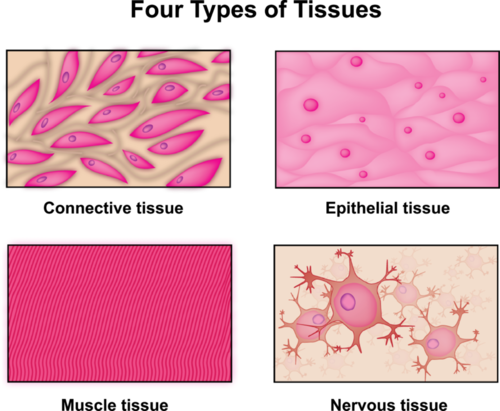READ: Basic Anatomy
Organs and Organ Systems
Organs and Organ Systems
During this unit we will be learning about what medical examiners look for during an autopsy. An autopsy is when a body is examined in order to help determine the cause and manner of death. In order to better understand what a medical examiner can learn by looking at a body, we need to review some basic human anatomy.
How is the human body similar to a well-tuned machine?
Many people have compared the human body to a machine. Think about some common machines, such as drills and washing machines. Each machine consists of many parts, and each part does a specific job, yet all the parts work together to perform an overall function. The human body is like a machine in all these ways. In fact, it may be the most fantastic machine on Earth.
Levels of Organization
The human machine is organized at different levels, starting with the cell and ending with the entire organism. At each higher level of organization, there is a greater degree of complexity.The human organism has several levels of organization.
Cells
The most basic parts of the human machine are cells—an amazing 100 trillion of them by the time the average person reaches adulthood! Cells are the basic units of structure and function in the human body, as they are in all living things. Each cell carries out basic life processes that allow the body to survive. Many human cells are specialized in form and function, as shown in Figurebelow . Each type of cell in the figure plays a specific role. For example, nerve cells have long projections that help them carry electrical messages to other cells. Muscle cells have many mitochondria that provide the energy they need to move the body.
You can watch a video about some of the specialized cells of the human body and how they function at this link:
Different types of cells in the human body are specialized for specific jobs. Do you know the functions of any of the cell types shown here?
Tissues
After the cell, the tissue is the next level of organization in the human body. A tissue is a group of connected cells that have a similar function. There are four basic types of human tissues: epithelial, muscle, nervous, and connective tissues. These four tissue types, which are shown inFigure below , make up all the organs of the human body.
Organs and Organ Systems
After tissues, organs are the next level of organization of the human body. An organ is a structure that consists of two or more types of tissues that work together to do the same job. Examples of human organs include the brain, heart, lungs, skin, and kidneys. Human organs are organized into organ systems, many of which are shown in Figure below . An organ system is a group of organs that work together to carry out a complex overall function. Each organ of the system does part of the larger job.
Many of the organ systems that make up the human body are represented here. What is the overall function of each organ system?
Summary
- The human body is organized at different levels, starting with the cell.
- Cells are organized into tissues, and tissues form organs.
- Organs are organized into organ systems such as the skeletal and muscular systems.
CK-12 Foundation, http://creativecommons.org/licenses/by-nc-sa/3.0/


